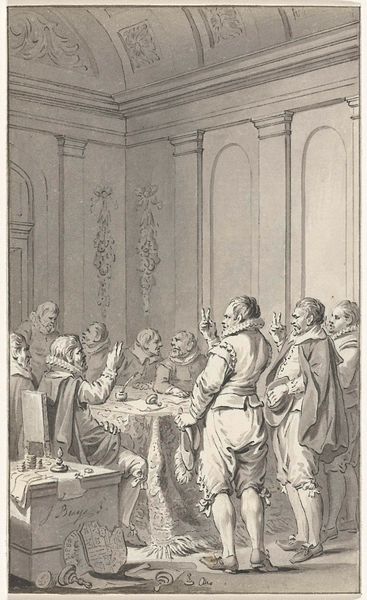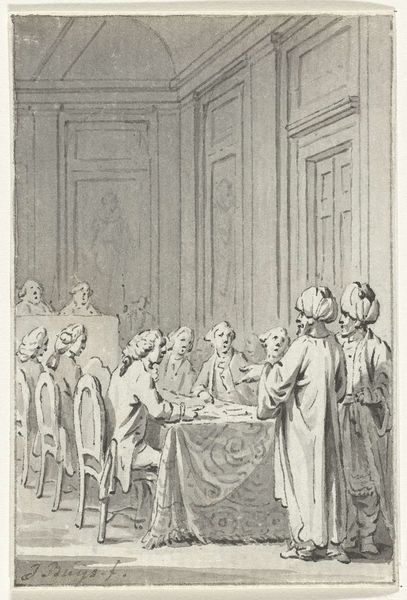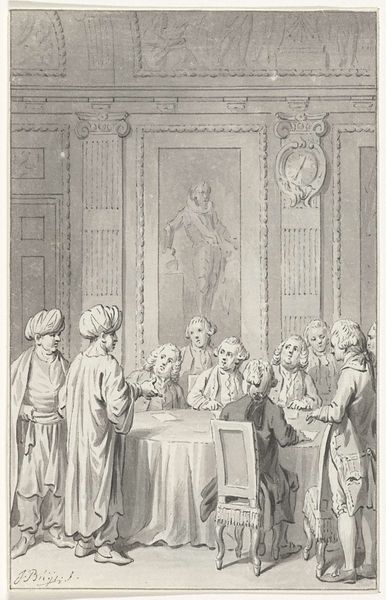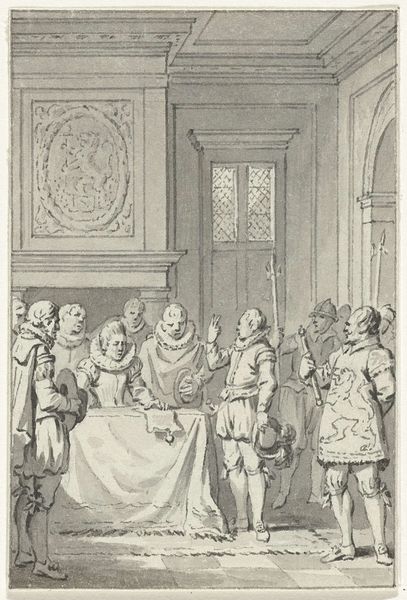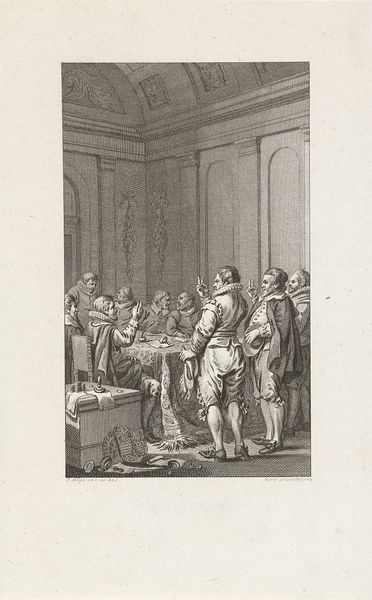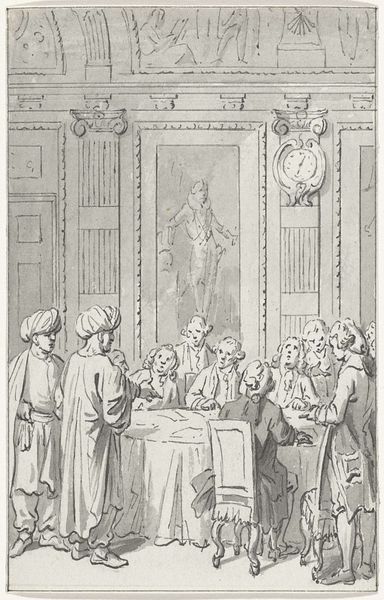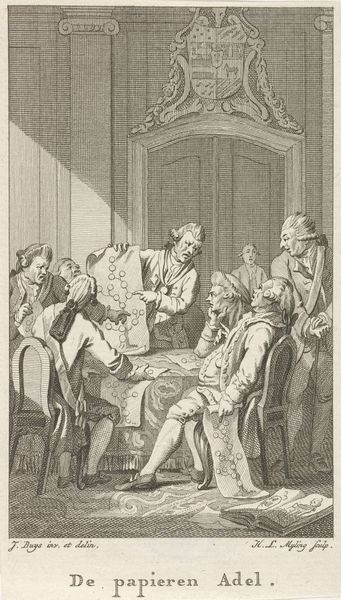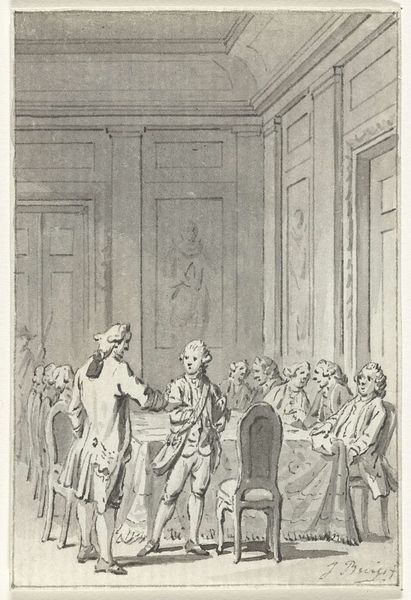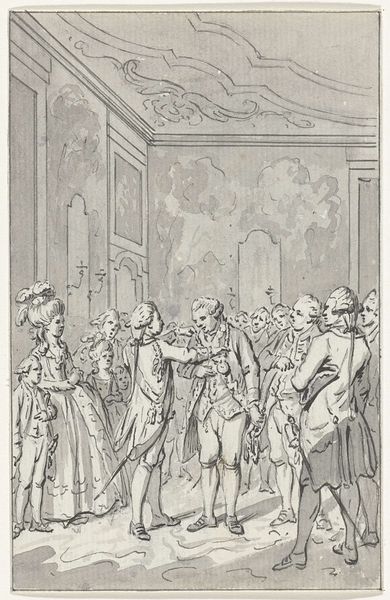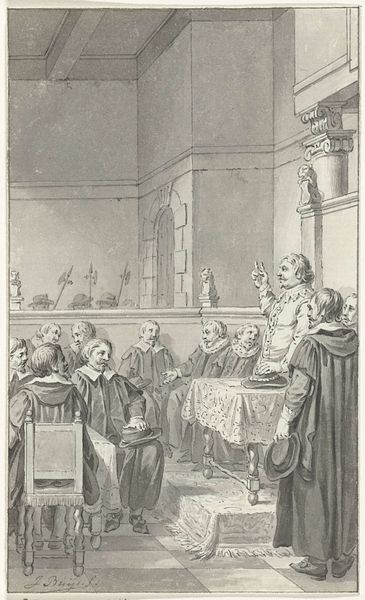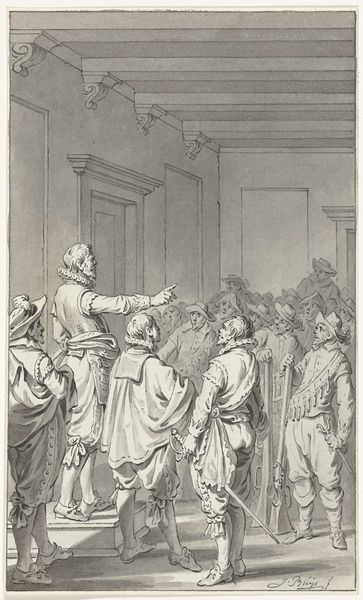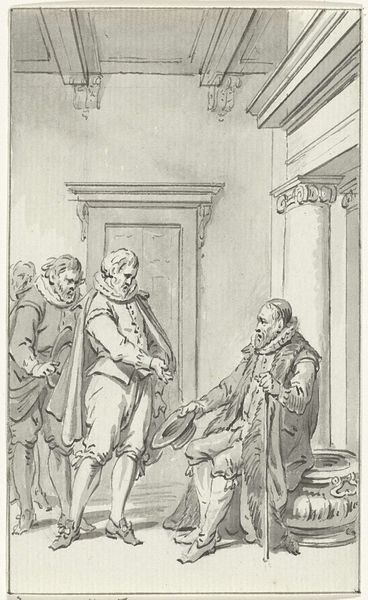
Dimensions: height 150 mm, width 90 mm
Copyright: Rijks Museum: Open Domain
Editor: So, this is Jacobus Buys' "The Abjuration of Philip II by the States General," made with pen and ink around 1784-1786. The atmosphere seems quite tense, with all these figures gathered, making strong gestures. What can you tell me about what's happening here, from a broader context? Curator: It’s a pivotal moment in Dutch history, re-imagined here during the late 18th century with, indeed, heightened drama. Buys isn't just depicting an event; he's engaging with ideas of national identity and resistance to tyranny. Consider how this scene—the formal deposition of a King—resonated during the Enlightenment and the lead-up to other revolutions, like the French Revolution. Editor: I see...so it’s not just about what happened in 1581, but how people at the time of the drawing would have viewed that event. Is there anything else in the composition that points towards that reading? Curator: Look at the architecture surrounding them – do you see anything of note? Think about what styles were associated with nobility, wealth, royalty versus what the event itself conveys: change, reformation, independence. Are they clashing or in agreement with each other? How would that make you interpret the work, based on what we know of its time? Editor: The setting is formal and grand, almost contrasting with the rebellious act. It seems to emphasize the gravity and the symbolic disruption of that act, like these weren't just ordinary people. Curator: Precisely. The setting suggests a rupture between past grandeur and the birth of a new order. Considering how Buys employs line and shadow, it adds another layer. The clean lines suggest reason, and the light a future, but the use of shade introduces complexities. How do these historical themes affect contemporary debates about sovereignty and power? Editor: That’s interesting! So, it is much more than a history lesson; it’s a statement about authority, both then and perhaps even now. It definitely gives me a new way to approach history paintings. Curator: Absolutely. And that’s the point. By analyzing these historical representations, we start to notice the present values in them.
Comments
No comments
Be the first to comment and join the conversation on the ultimate creative platform.
